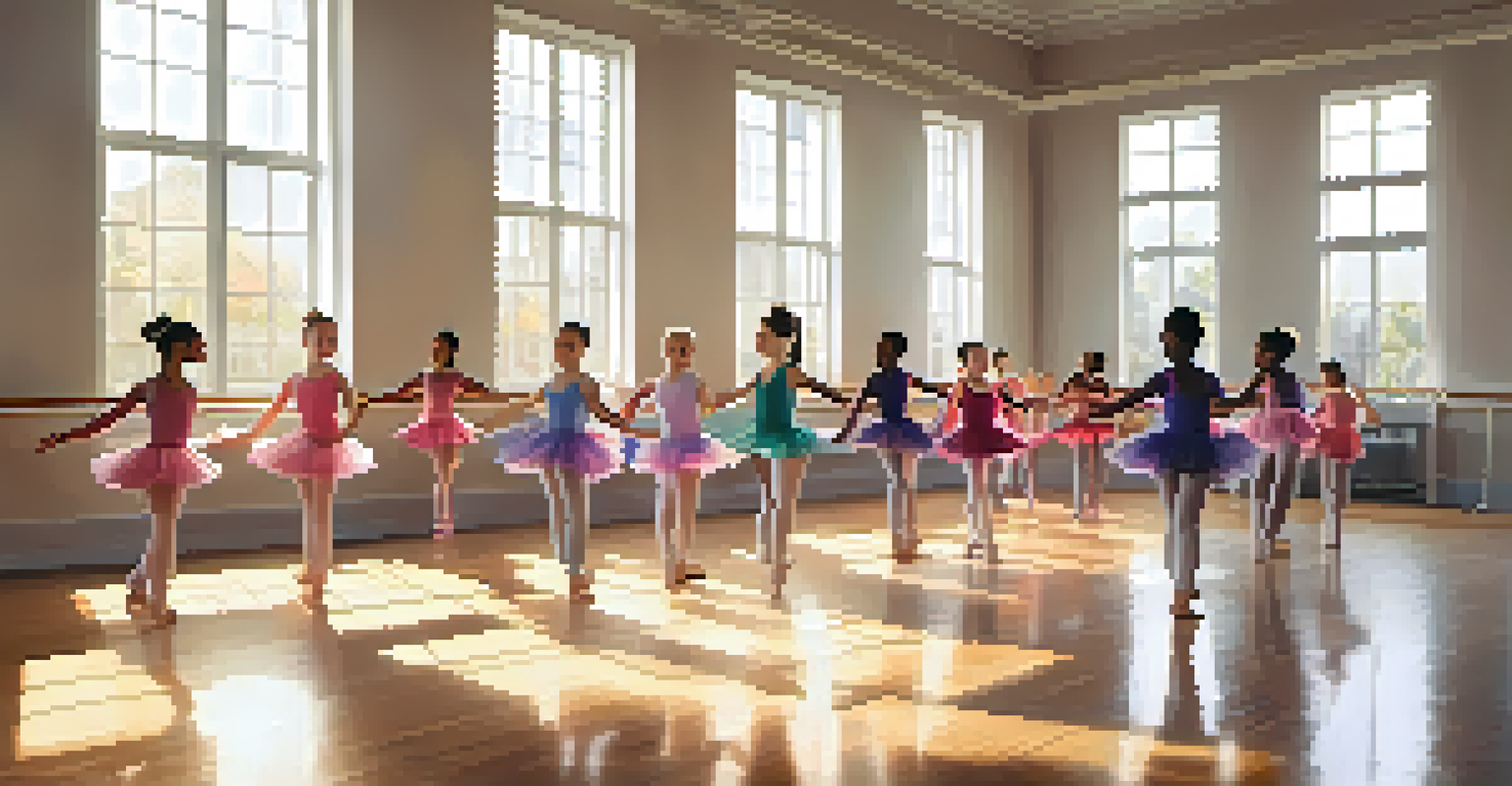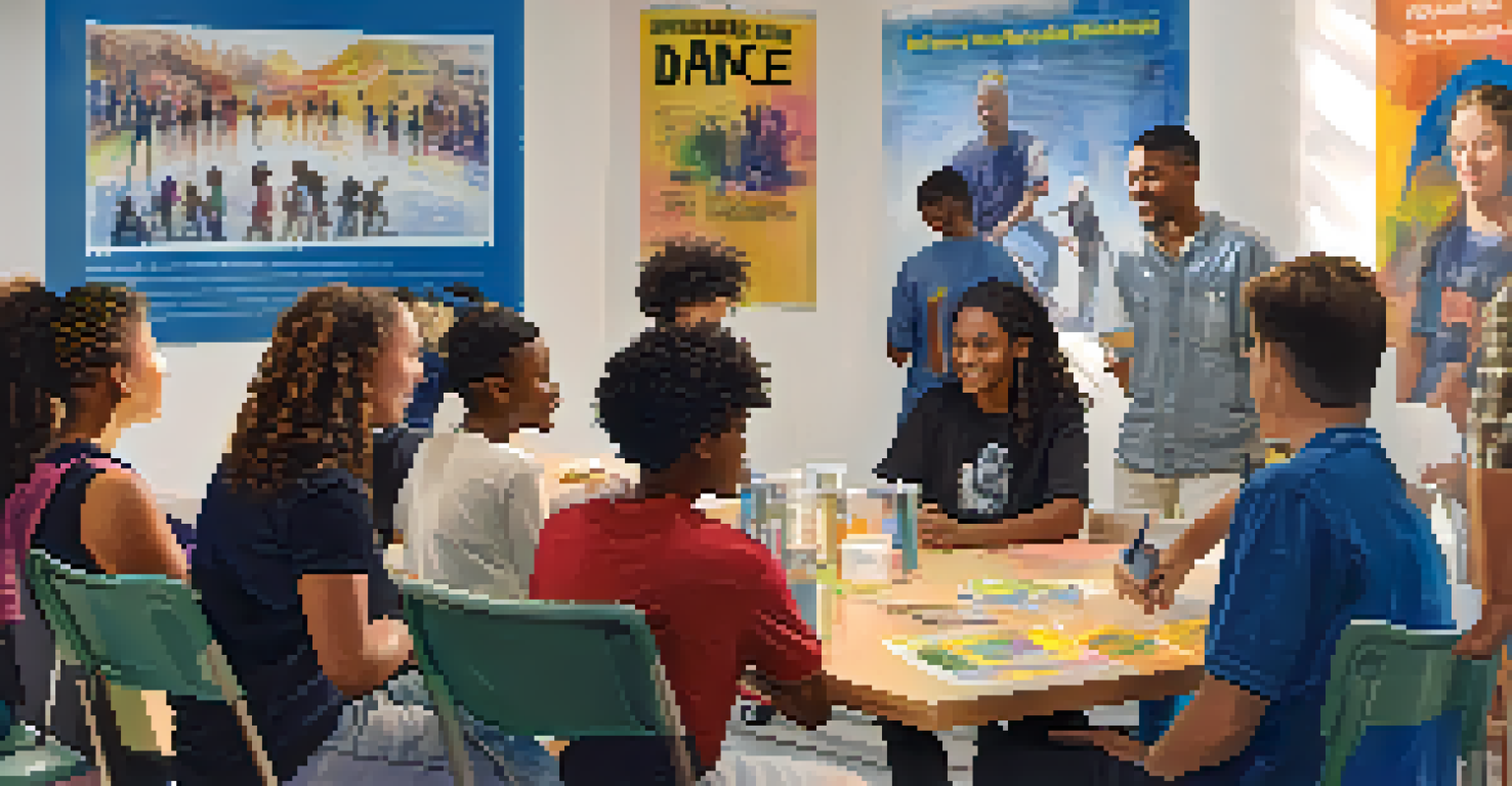Public Policy Initiatives Supporting Dance for Youth Programs

Understanding the Importance of Youth Dance Programs
Youth dance programs offer more than just physical activity; they are vital for social, emotional, and cognitive development. Engaging in dance helps children express themselves creatively while also learning discipline and teamwork. Additionally, these programs can serve as a safe haven for youth, fostering community and belonging.
Dance is the hidden language of the soul.
Dance as an art form encourages creativity and self-expression, essential skills in today's world. By participating in dance, young individuals can build confidence, develop social skills, and improve their overall well-being. This holistic development is crucial, especially in a fast-paced society where youth may face various pressures.
Furthermore, dance programs can be particularly beneficial for at-risk youth, providing them with constructive outlets for their emotions and energy. By prioritizing dance in public policy, we can create opportunities that help youths thrive both in and out of the classroom.
Key Public Policies Supporting Youth Dance Programs
Various public policy initiatives have emerged to support youth dance programs across the country. These policies often include funding allocations for arts education, grants for local dance organizations, and community partnerships aimed at promoting dance as an essential part of youth development. Such initiatives not only help sustain existing programs but also foster the creation of new ones.

For example, the Every Student Succeeds Act (ESSA) allows states to use federal funds for arts education, including dance. This provides schools with more resources to incorporate dance into their curricula and extracurricular activities. By recognizing the importance of dance, policymakers are actively promoting a more rounded education for students.
Youth Dance Programs Foster Growth
Youth dance programs promote social, emotional, and cognitive development, helping children build confidence and creativity.
Additionally, local governments are increasingly recognizing the value of arts programs in community development. By investing in dance initiatives, they are not only enriching the lives of young people but also enhancing community engagement and cultural vibrancy.
Successful Case Studies of Dance Initiatives
Several successful case studies illustrate the impact of public policy on youth dance programs. For instance, the Dance for All initiative in New York City provides free dance classes to underprivileged children, funded by city grants. This program has not only increased access to dance but also improved academic performance among participants.
The dance is a poem of which each movement is a word.
Another example is California's Arts in Schools initiative, which mandates that schools include arts education in their curriculum. This policy has led to a significant uptick in dance programs across the state, ensuring that students have the opportunity to engage in various forms of artistic expression.
These success stories highlight the potential of public policy to create meaningful change in the lives of young people. By investing in dance education, communities can support the development of well-rounded, creative individuals who contribute positively to society.
The Role of Nonprofits in Youth Dance Advocacy
Nonprofit organizations play a crucial role in advocating for youth dance programs and shaping public policy. Groups like Dance/NYC and the National Dance Education Organization work tirelessly to promote the value of dance in education and community settings. They provide resources, conduct research, and mobilize support to ensure that dance remains a priority in public policy discussions.
These organizations often collaborate with schools and local government to secure funding and resources for dance programs. By leveraging their networks and expertise, nonprofits can help bridge the gap between policymakers and the communities they serve, ensuring that the voices of young dancers are heard.
Public Policies Enhance Dance Access
Supportive public policies like the Every Student Succeeds Act facilitate funding for arts education, including dance programs.
Moreover, nonprofits frequently engage in public outreach and education campaigns to raise awareness about the benefits of dance. By sharing success stories and research findings, they help shift public perception and garner support for vital initiatives that benefit youth.
Challenges Faced by Dance Programs
Despite the benefits of youth dance programs, several challenges persist that hinder their growth and sustainability. Funding shortages are often the most significant obstacle, as many programs rely on grants and donations to operate. When financial support fluctuates, it can lead to cutbacks or even program closures, ultimately affecting the youth they serve.
Another challenge is the perception of dance as a non-essential subject in schools. When schools prioritize standardized testing over arts education, dance programs often suffer. This lack of recognition can limit opportunities for students to engage in dance, particularly in lower-income areas.
Finally, accessibility remains an ongoing issue. Many dance programs are not easily accessible to all youth, particularly those in underserved communities. Addressing these challenges is essential to ensure that all children have the opportunity to experience the benefits of dance.
The Impact of Technology on Dance Education
Technology has transformed the way dance education is delivered, offering new opportunities for youth to engage with the art form. Online classes, virtual workshops, and dance apps have made it easier for students to access training and resources, regardless of their location. This accessibility can help bridge gaps for young dancers who may not have local programs available.
Moreover, technology can facilitate creative collaboration among dancers from different backgrounds and regions. Virtual dance challenges and social media platforms allow youths to share their work, gain feedback, and connect with a broader community. This can enhance their skills and promote a sense of belonging among aspiring dancers.
Nonprofits Advocate for Dance Education
Nonprofit organizations play a crucial role in promoting youth dance initiatives and securing resources to sustain these programs.
However, while technology presents exciting possibilities, it also requires careful consideration. It's essential to strike a balance between in-person instruction and online engagement to ensure that young dancers receive comprehensive training that includes physical technique and personal connection.
Future Directions for Youth Dance Programs
Looking ahead, the future of youth dance programs will likely involve more integrated approaches combining arts education with other subjects. Schools may adopt interdisciplinary models that incorporate dance into science, math, and literacy, showcasing the connections between different fields of study. This could further enhance the value of dance in education.
In addition, increased collaboration between public and private sectors could lead to innovative funding solutions for dance programs. By forming partnerships with local businesses, schools can access resources and expertise that support their dance initiatives, ensuring sustainability and growth in the long run.

Lastly, as communities continue to evolve, the need for culturally relevant dance programs will become increasingly important. Programs that reflect the diverse backgrounds and experiences of participants can foster greater engagement and inclusivity, ensuring that every young person feels represented and valued in their dance journey.